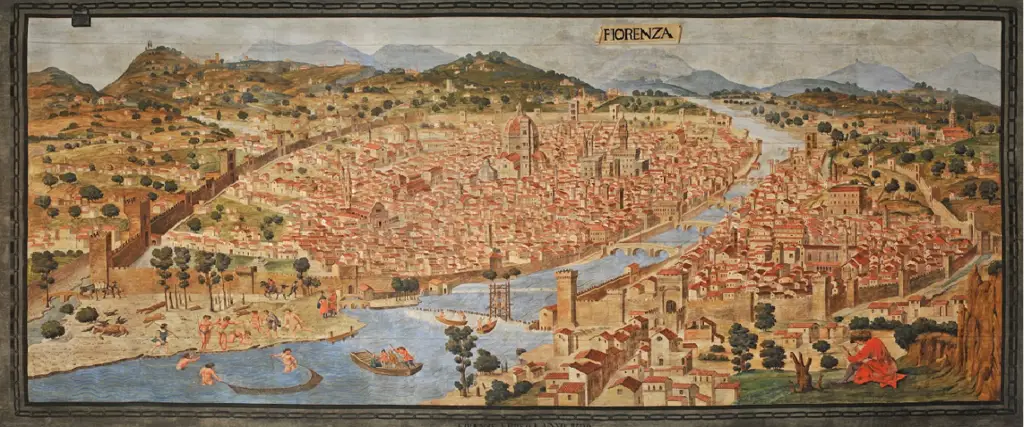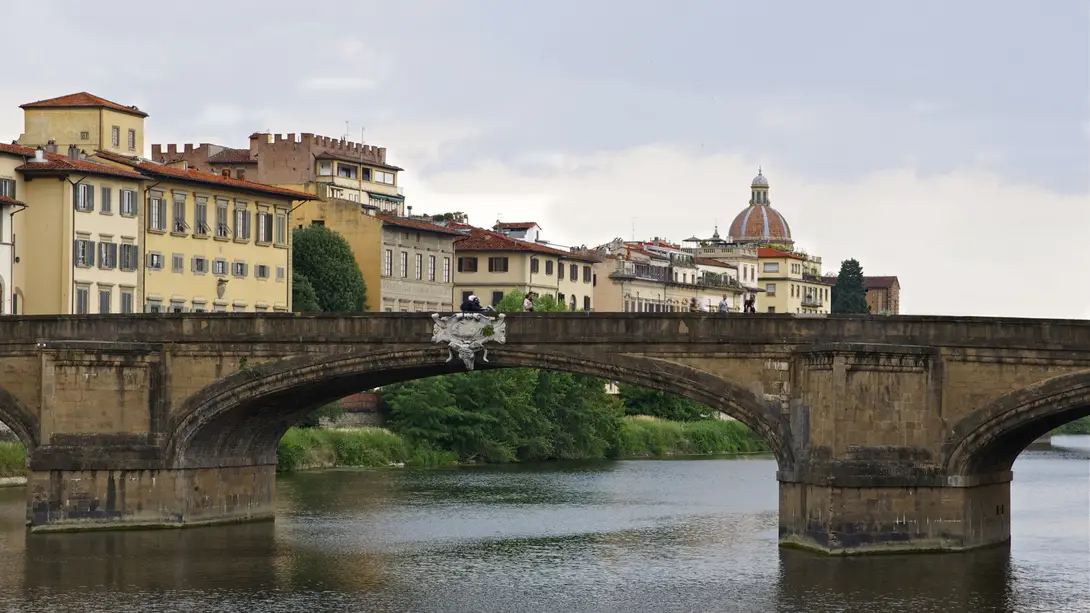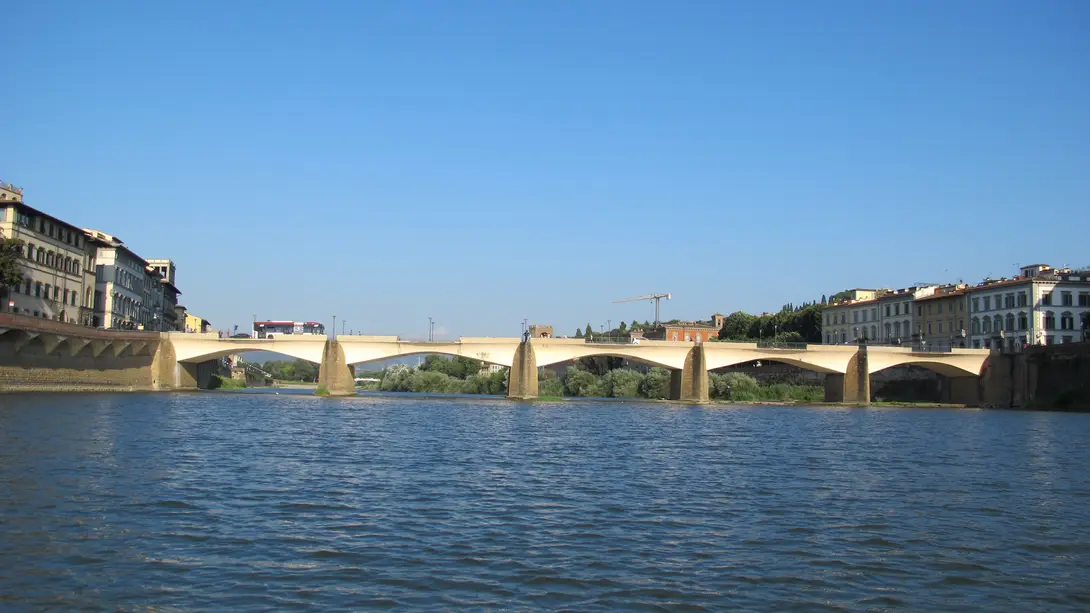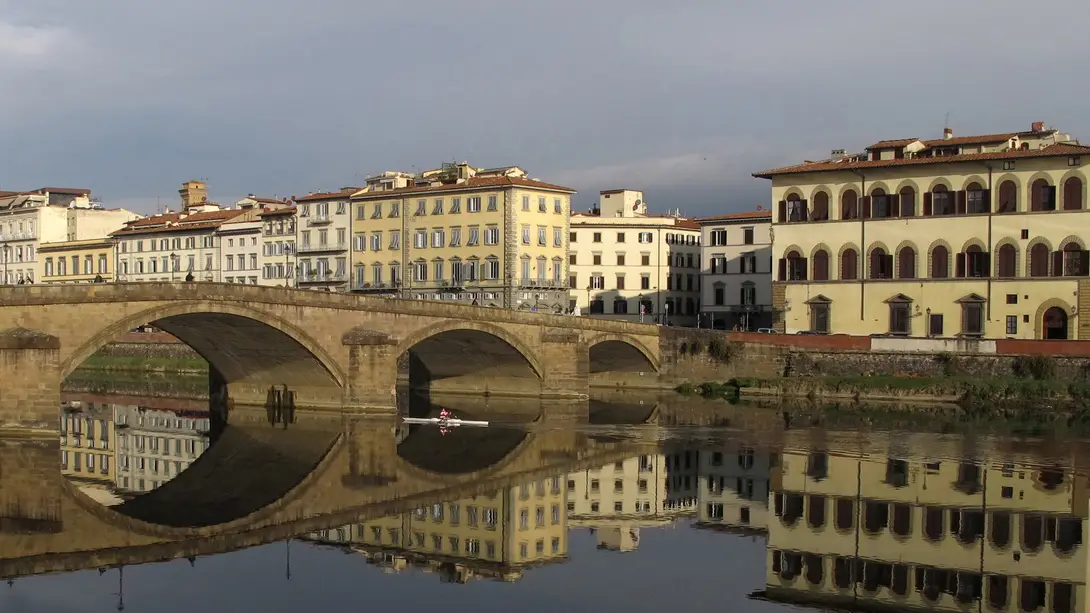
From one Bridge to the next - Florence and its river
The Arno and Florence, an age-old union that binds the city to its river: the beating heart of its economic activities, communication route, theater of historical events. The Arno, with its bridges, became an integral part of the urban fabric and built the fortune of Florence between the 13th and 15th centuries. It is impossible for us to resist the temptation to accompany you and discover these fascinating constructions!
Ponte Vecchio, Florence's first bridge, the origins of which date back to Roman times (1st century B.C.), was soon followed by Ponte alla Carraia, when part of the Oltrarno was annexed to the first circle of city walls. The construction of Ponte alle Grazie took place shortly afterwards while the building of Ponte Santa Trinita goes back to the 16th century.
Let's imagine the Florence of that time, teeming with busy people among mills and the textile factories, the tanners and the dyers on the banks of the river, while we see the merchant ship flowing up the river into the city. Imagine the small brick houses on Ponte alle Grazie, where the hermitages of the Murate were located for centuries; or, on Ponte Vecchio, butchers and fishmongers, replaced in the sixteenth century by the famous goldsmiths, at the behest of Cosimo I de 'Medici. He also commissioned Ponte Santa Trinita, the elegant connection between the area of Palazzo Pitti and "this side of the Arno" faithfully reconstructed after the Second World War. From Ponte alla Carraia we would have seen, until the early nineteenth century, the traditional fireworks (I fochi) that used to end the celebrations for St. John the Baptist, the city's patron saint, every 24 June.
And how can we forget the floods of the Arno, such as that of 1333 which swept away all the bridges except the Ponte alle Grazie, or the Nazi fury in 1944 which razed them all to the ground. All but one: the Ponte Vecchio, which the photos of the time show intact in its beauty surrounded by rubble.
Strolling along the Arno, we invite you to discover the most beautiful bridges in Florence, starting from the Ponte alle Grazie and ending with the Ponte alla Carraia. You will discover them one by one, each with its own story and all together to telling about Florence!
Comune di Firenze
The places
Stages
Ponte Santa Trinita
The original bridge was built in1252, and it was named after the nearby church. Like all of Florence's historical bridges, it was rebuilt several times following the numerous floods of the Arno; after the terrible one of 1557, Cosimo I de' Medici commissioned its reconstruction to Bartolomeo Ammannati, who was perhaps inspired by an idea of Michelangelo Buonarroti. Made of pietra forte and decorated with commemorative epigraphs, it was considered the most elegant bridge in Florence, worthy of the grand ducal processions that used to pass over it. The statues at both ends are by Giovanni Caccini (Autumn and Summer), Taddeo Landini (Winter) and Pietro Francavilla (Spring). Destroyed by the Germans during the Second World War, it was rebuilt exactly "as it was and where it was" in 1958.
Ponte alle Grazie
Ponte alle Grazie was the third bridge to be built after Ponte Vecchio and Ponte alla Carraia. Its first name was "Ponte Rubaconte" after the Podestà at the time of its first construction (1237). The present name derives from the chapel of "Santa Maria delle Grazie", located on the bridge since the 14th century, where the image of the saint was worshipped; among the numerous religious buildings that characterized the bridge the one of the cloistered nuns "Le Murate" (then moved to Via Ghibellina) is worthy of mention. During the 19th century from one of its "shops" it was possible to reach the river and use the "public baths" real bathing estabishments of the time.In 1944 the bridge - like all the others, with the exception of the Ponte Vecchio - was destroyed during the Nazi retreat. The present bridge was inaugurated in 1957.
Ponte Vecchio
Ponte Vecchio, one of Florence's landmarks, stands at the Roman bridge of ancient Florentia. Over the centuries the bridge was rebuilt several times, also due to the numerous floods of the Arno; following one of these (1333) it was decided to build a new, more stable one (with three arches supported by just two pillars, with a series of masonry shops on both sides).
The bridge, built in 1345, probably designed by Taddeo Gaddi, is essentially what we can still admire today. The current goldsmiths' workshops - established in 1593 in place of the old butchers' and fishmongers' shops - make it the 'most precious bridge in the world'. The Corridoio Vasariano, (the suspended passageway allowing the Medici to move easily between Palazzo Vecchio and Palazzo Pitti, through the Uffizi) built by Giorgio Vasari in 1565 on commission of Cosimo I, runs right above these buildings. At the centre of the bridge you can admire the monument to Benvenuto Cellini (Raffaello Romanelli, 1900) and the remains of a 14th-century sundial. In August 1944, during the Nazi retreat, this was the only Florentine bridge that remained intact. The terrible flood of 1966, while causing serious damage, did not compromise its structure.
The views you can enjoy from here are splendid: over the Arno and its bridges, over the city, but also over the surrounding hills
Ponte alla Carraia
The original bridge was the second one built over the Arno after Ponte Vecchio, hence the name 'new bridge'. It was also known as the "ponte alle Carra": the work was erected at the behest of the Umiliati di Ognissanti fathers, the first Florentine wool entrepreneurs, and was used to divert wagon traffic to the homonymous city Gate of the penultimate circle of walls. Over the centuries it was rebuilt several times following the numerous floods of the Arno, but also in 1304, when it collapsed under the excessive weight of the crowd that had come to attend a show on the river. The bridge, rebuilt by Cosimo I de' Medici, lasted for about four centuries, as it was destroyed – like all others, with the only exception of Ponte Vecchio - in 1944 during the Nazi retreat. The current version dates back to 1951.



